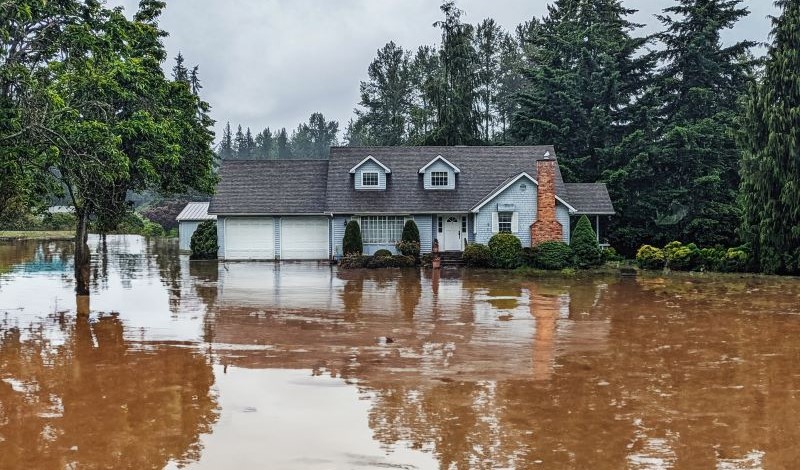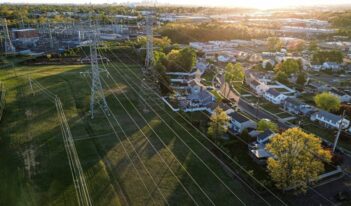
Scholars discuss property insurance regulation in an age of growing climate risk.
Hurricane Helene—the deadliest hurricane to strike the contiguous United States since Hurricane Katrina—brought unprecedented hurricane-force gusts and thousand-year floods to the southern Appalachian region. Climate change magnified the destruction—including in areas once hailed as “climate havens.”
Climate disasters cause immense property damage to American homes. In North Carolina alone, Hurricane Helene damaged more than 120,000 homes and destroyed thousands more.
Homeowners insurance mitigates this risk, helping households recover after disasters strike. But as climate disasters grow in frequency and severity, premiums rise—sometimes dramatically. Insurers may also decline to write or renew policies, exclude coverage for climate risks, or withdraw from high-risk areas. As a result, more homeowners find themselves uninsured or underinsured, left to shoulder the costs when disaster strikes.
These costs are not borne equally. Disasters often force households without the means to repair or rebuild to sell at a loss. And more low-income communities and communities of color live in high-risk areas where insurance is prohibitively expensive or unavailable.
Because mortgages typically require comprehensive homeowners’ insurance, homeownership rates are likely to fall as premiums rise. Where coverage is difficult to find, many will be unable to secure a mortgage—putting home ownership out of reach for most low-income and middle-class Americans.
Home equity represents a significant portion of American household wealth, particularly for middle-class families. Because homeowners insurance protects property values, a functioning homeowners’ insurance market plays a crucial role in stabilizing the U.S. economy.
Although the federal government serves as the flood insurance provider of last resort, states remain the primary regulators of property insurance. Approaches vary. Some states, such as California, require regulatory approval to raise premiums. Approvals—subject to political pressure to keep rates law—often face delays or denials.
In 32 states, insurers must cover high-risk homeowners without access to traditional insurance. These plans are, by definition, financially unviable. States subsidize claims with limited reserves and reinsurance—in effect, insurance for insurers. When claims exceed these limits, insurers pay but may pass costs to policyholders statewide.
Proponents of robust state regulation argue that all Americans deserve affordable homeowners’ insurance. Critics counter that state intervention distorts the market: insurers offset lower premiums in prior-approval states by raising rates elsewhere, and mandated policies force low-risk homeowners to subsidize ownership in high-risk regions. Beyond unfairness, critics contend that public risk spreading masks the true cost of ownership—ironically encouraging development in vulnerable areas.
Policies to encourage climate risk-reduction practices such as installing wind-resistant roofing and creating firebreaks around homes are less controversial. Most policymakers agree that states should adopt a mix of policies to support home hardening, such as tax credits, building code mandates, and requirements for insurers to factor risk mitigation into premiums.
Ultimately, insurance regulation may offer only temporary solutions. Dave Jones, former insurance commissioner of California, warns climate risk will overwhelm the property insurance market without a substantial reduction in greenhouse gas emissions.
In this week’s Saturday Seminar, scholars discuss homeowners’ insurance in the era of climate risk.
- In a recent report for the Center for American Progress, Lilith Fellowes-Granda, Marc Jarsulic, and Alexandra Thornton argue that risk-spreading programs are necessary to address the diminished availability of homeowners’ insurance due to climate risk. They propose a tripartite framework to assess such policies. First, Fellowes-Granda, Jarsulic, and Thorton emphasize economic rationality, urging the thorough case-by-case weighing of short-term costs against long-term benefits. Second, they caution against perverse incentives—particularly underpricing risk, which could encourage inadvisable rebuilding in high-risk areas. Finally, Fellowes-Granda, Jarsulic, and Thorton stress the importance of social equity, but warn that policies that increase short-term affordability should not be allowed to delay investments in risk-reduction necessary to prevent greater long-term harm.
- In an essay for the Brookings Institution, Meredith Fowlie of the Brookings Institution and several coauthors discuss the impact of climate change on home insurance markets. Fowlie and her coauthors note that homeowners insurance premiums rose 13% between 2020-2023, with insurers retreating from high-risk regions. The Fowlie team argues that rising premiums force homeowners to absorb higher costs and reduced property values in vulnerable areas. In response, Fowlie and her coauthors recommend state regulators take proactive steps to reduce rising insurance costs, such as making sophisticated risk models accessible to private insurers, promoting technologies that make properties more resilient, and implementing building code mandates to mitigate climate disaster risk.
- In an article in Georgia Law Review, Mark Nevitt of Emory University School of Law and Michael Pappas of the University of Colorado Law School examine the impact of climate change on homeowners’ insurance availability. Nevitt and Pappas argue that, as insurers retreat from high-risk areas, homeowners face soaring premiums or loss of coverage. Each state must decide whether to intervene to keep insurance affordable or allow rates to reflect the true climate risks, Nevitt and Pappas note. But they challenge the assumption that government insurance programs always subsidize rates and obscure climate risks. Ultimately, Nevitt and Pappas emphasize that studying the diversity of state regulatory approaches—which may reinforce or undermine market signals—offers important lessons for future regulation.
- In a report for the Congressional Budget Office, researchers Sheila Campbell and David Torregrosa argue that homeowners’ insurance policies should be made more affordable for low- and middle-income households. To this end, Campbell and Torregrosa recommend that low- and middle-income communities purchase insurance as a block. The broader participation and buying power of communities, as well as a more diverse risk pool, mean that community-based policies obtain more affordable rates for individual property owners, they explain. Community plan ownership and shared risk could also, Campbell and Torregrosa note, reduce reliance on state markets of last resort and federal disaster relief support, as well as allow communities to rebuild faster in the wake of climate disasters.
- The National Flood Insurance Program (NFIP) should institute a means-based premium assistance program, recommends the Government Accountability Office (GAO) in a recent report. The GAO explains that NFIP attempts to ensure affordability by capping annual increases discount premiums for all policyholders—regardless of ability to pay. This regressive approach, the GAO argues, results in a double policy failure: a universal cap reduces overall income from premiums, contributing to longstanding program deficits, and results in lower participation by households unable to afford even discounted rates. The GAO concludes that a means-based approach would better balance the NFIP’s goals of premium affordability for low-income Americans, increased national rates of household flood insurance coverage, and programmatic financial stability.
- In a forthcoming article in the Harvard Environmental Law Review, Daniel Schwarcz, professor of law at the University of Minnesota, proposes reforming the homeowners’ insurance market using the Affordable Care Act (ACA) as a model. Schwarcz notes the shortcomings of state efforts to balance economic relief and climate risk. Schwarcz instead suggests a system of cooperative federalism: The federal government sets a “regulatory floor,” which states can apply to waive, if necessary, or exceed. Schwarcz further proposes an anti-discrimination regime, similar to the ACA, allowing discrimination in homeowners’ insurance pricing only based on pre-approved factors, such as location and homeowner or communal risk mitigation.
The Saturday Seminar is a weekly feature that aims to put into written form the kind of content that would be conveyed in a live seminar involving regulatory experts. Each week, The Regulatory Review publishes a brief overview of a selected regulatory topic and then distills recent research and scholarly writing on that topic.



